Natural Approaches to Increasing GLP-1 Levels
DISCLAIMER:This blog does not intend to provide diagnosis...
- In this article:
- What Is GLP-1?
- Risks of GLP-1 Pharmaceutical Drugs
- Benefits of Activating GLP-1 Receptors
- Foods That Increase GLP-1 Levels
- Supplements That Increase GLP-1
- Conclusion
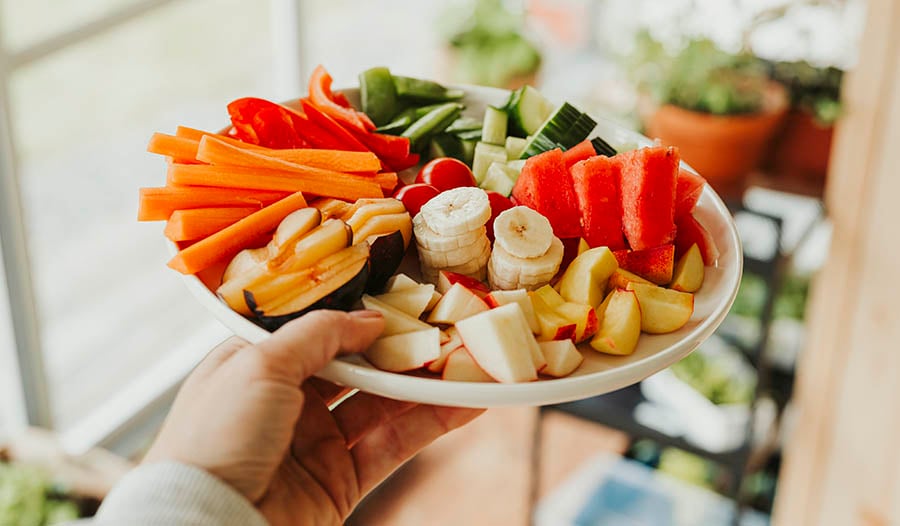
Natural approaches, foods, and supplements can mimic and activate glucagon-like peptide-1 function, also known as GLP-1 agonists.
The substances attach to GLP-1 receptors in the body and may provide the benefits of GLP-1 activation on conditions like diabetes, weight management, insulin resistance, depression, and other health conditions.
What Is GLP-1?
Glucagon-like peptide-1 (GLP-1) is an incretin hormone that plays a significant role in blood sugar regulation and feelings of fullness after eating. The peptide was first identified in the 1990s in the saliva of the Gila monster, a type of lizard. From that, eventually, the pharmaceutical drugs exenatide, liraglutide, semaglutide, and tirzepatide were developed.
The medications are GLP-1 receptor agonists, which mimic the effects of naturally occurring GLP-1 peptides produced in the gut.
These medications have become popular in recent years as a treatment for type 2 diabetes due to their ability to reduce appetite, promote weight optimization, and improve glycemic control. These pharmaceutical drugs have since gained approval for the treatment of obesity.
In my private practice, I started using GLP-1 drugs such as exenatide in 2006 and liraglutide in 2010 for my patients with type 2 diabetes. However, they were costly and required daily injections. The first generation of drugs had minimal weight loss benefits. However, in late 2017, a once-weekly GLP-1 diabetes drug hit the market, and people with diabetes now had the option of a weekly injection instead of a daily injection. I started noticing significant diabetic control and eventually weight loss in my type 2 diabetic patients taking this medication. Many of my insulin-dependent type 2 diabetics who started this new medication were able to discontinue their insulin and other diabetic medications as a result of their weight stabilization. Please note that one must work closely with one's physician before stopping any medication.
In 2022, GLP-1 drugs became available as weight management drugs. However, for many people, this drug is too expensive and unavailable due to a variety of reasons. Nausea, a common symptom, usually improves over time, but for some – the feeling persists, making the drug intolerable.
There are also risks with these GLP-1 medications, so anything that can be done to increase GLP-1 levels naturally should be considered as an alternative. When taking the drug for diabetes, realize that elevated blood sugar is more dangerous in the long term, so a risk-benefit analysis needs to be undertaken, especially if one is unable to control their blood sugar through dietary means.
Risks of GLP-1 Pharmaceutical Drugs
- Nausea
- Vomiting
- Abdominal pain
- Constipation
- Heartburn
- Flatulence
- Gastritis
- Acute kidney injury
- Pancreatitis
- Gallstones
- Ileus
- Medullary thyroid cancer risk
As a result of the above adverse effects, interest has grown in natural ways to increase GLP-1 activity through foods, supplements, and lifestyle changes. When we consume certain nutrients, our bodies release GLP-1, which can bind to and activate GLP-1 receptors to provide therapeutic benefits.
Benefits of Activating GLP-1 Receptors
By increasing endogenous GLP-1 or using agonists that mimic GLP-1, we can activate GLP-1 receptors and obtain therapeutic benefits such as the following:
Weight Control and Improved Satiety
GLP-1 slows digestion, suppresses appetite, and enhances metabolism to promote one to achieve optimal weight.1 GLP-1 peptides also reduce cravings and make one feel fuller longer. While no scientific studies have compared pharmaceutical drugs with supplements, a healthy diet including nutrient-dense foods and regular physical activity plays a vital role in weight management.
Better Blood Sugar Control
GLP-1 stimulates insulin secretion in a glucose-dependent manner, lowers glucagon output, and improves insulin sensitivity, all helping reduce blood sugar.2
Cardioprotective Effects
GLP-1 receptors are present in the cardiovascular system. Activating them lowers blood pressure and reduces inflammation and other heart-healthy changes.3
Reduced Liver Fat
GLP-1 activity is associated with decreased fat deposition and inflammation in the liver, which may help treat fatty liver disease.4
When one consumes GLP-1-boosting foods and supplements, one can activate GLP-1 receptors and obtain wide-ranging therapeutic effects, from weight control to heart protection. Lifestyle changes like exercise, stress reduction, and sleep can also optimize endogenous GLP-1 creation. Targeting this important hormone naturally is an emerging area of interest for managing and preventing chronic disease.
Foods That Increase GLP-1 Levels
Several categories of natural nutrients have been shown to stimulate GLP-1 secretion:
Protein
Consuming high-protein foods like meat, fish, eggs, and plant-based proteins triggers the release of GLP-1, improving satiety and blood sugar control.5 A 2021 study6 also showed the benefit of whey protein powder in increasing GLP-1 levels compared to a control meal.
Healthy Fats
Monounsaturated and omega-3 fatty acids found in foods like olive oil, avocados, nuts, and fatty fish can boost GLP-1 levels7; nuts such as almonds, pistachios, and peanuts may also increase GLP-1 levels, according to studies.8
Fiber
Soluble fibers like inulin, beta-glucans, and resistant starch nourish gut bacteria, leading to increased butyrate, which increases GLP-1 production.9 Food sources of prebiotics include onions, garlic, bananas, oats, and legumes. Fermentable fiber foods such as Brussels sprouts, black beans, lentils, split peas, oats, and raspberries stimulate the gut to secrete GLP-1 peptides.10
Probiotics
Cultured foods that contain beneficial bacteria like Lactobacillus11 and Bifidobacterium12 species may enhance GLP-1 function by optimizing gut health. Eating a diet containing yogurts, kimchi, miso soup, kombucha, and sauerkraut can help keep the gut microbiome optimized.
Supplements That Increase GLP-1
In addition to nutrient-rich whole foods, certain supplements have shown potential to increase GLP-1 levels:
Berberine
Berberine is extracted from the Barberry (Berberis vulgaris ) shrub containing evergreen and deciduous plants. Barberry is found in Europe, North Africa, the Middle East, and Asia.
Many studies have compared berberine to the popular oral diabetic medications known as metformin13. While we know that berberine can help optimize the gut microbiome, it may also be helpful via other mechanisms.
For example, this plant compound can mimic and enhance the effects of GLP-1 and has been shown to increase GLP-1 secretion from intestinal cells14. This likely explains one of the mechanisms by which those with diabetes can see an improvement in sugar control. A 2009 study15 showed berberine could help lower HgA1C from 8.3% to 7.1%, similar to prescription diabetic drugs.
Omega-3s
Fish oil, krill oil, and algae oil supplements provide omega-3 fatty acids that preliminary research16 suggests can increase GLP-1 release in the gut.
Probiotics
According to several articles and research studies, probiotics containing strains like L. acidophilus, B. infantis, or B. bifidum may stimulate GLP-1 production by improving gut microbiota17. In addition, a 2024 study18 discussed Akkermansia's ability to increase GLP-1 levels in the gut. A 2021 study19 showed that Akkermansia's novel P9 protein helps the gut secrete GLP-1 peptide.
Prebiotics
Inulin, fructooligosaccharides20 (FOS), and galactooligosaccharides21 (GOS) are prebiotic fibers that feed gut bacteria linked to higher GLP-1 levels.
Turmeric
Turmeric, also known as Curcuma longa and Indian saffron, is a rooted plant of the ginger family, often consumed for its anti-inflammatory, antioxidant, and digestive health properties. Curcumin, a chemical found in turmeric, is believed to provide many of the health benefits. While many people have used turmeric as a spice to enhance their food for over the past 4,000 years, turmeric has played an essential role in medicine! Scientific studies22 show that curcumin can help increase GLP-1 levels. A 2023 study23 found that curcumin stimulates explicitly the gut's L-cells to secrete GLP-1.
Vitamin D
80% of people worldwide are deficient in this sunshine vitamin. Low levels of vitamin D have been found in those with chronic diseases. Optimizing vitamin D is especially important when trying to improve bone health. A 2023 study24 showed that vitamin D may help enhance GLP-1 levels by improving the gut microbiome.
Yerba Mate
Yerba mate is an herb popular in South America and commonly consumed as a drink. It is believed to have several health benefits. It is believed to boost energy levels and mental alertness while having antioxidant properties. Many take it to help with weight maintenance.
Interestingly, studies25 have shown this herb may help satiety by stimulating GLP-1 levels in the gut. A 2011 study26 found similar results, concluding, "These findings suggest that mate may induce anorexic effects by direct induction of satiety and stimulation of GLP-1 secretion…". In my opinion, these findings also likely explain why some take it to help stabilize blood sugar.
Conclusion
In summary, high-protein foods, prebiotics, healthy fats, and probiotics can increase our natural GLP-1 secretion, as can supplements such as berberine, omega-3s, and certain probiotic strains. Activating GLP-1 receptors has been shown to aid weight loss, glycemic control, cardiovascular health, liver health, neurological function, and more. Further research is warranted, but boosting endogenous GLP-1 production and activity through nutritional interventions shows promising therapeutic potential across various conditions
References:
- Michaeleen Doucleff. Less snacking, more satisfaction: Some foods boost levels of an Ozempic-like hormone. NPR. Published October 30, 2023. https://www.npr.org/sections/health-shots/2023/10/30/1208883691/diet-ozempic-wegovy-weight-loss-fiber-glp-1-diabetes-barley
- Mashayekhi M, Nian H, Mayfield D, et al. Weight Loss-Independent Effect of Liraglutide on Insulin Sensitivity in Individuals with Obesity and Pre-Diabetes. Diabetes. 2023;73(1):38-50. doi:https://doi.org/10.2337/db23-0356
- Liu Y, Nie D, Lou X. The Cardiovascular Benefits of Glucagon-Like Peptide-1 Receptor Agonists as Novel Diabetes Drugs Are Mediated via the Suppression of miR-203a-3p and miR-429 Expression. DNA Cell Biol. 2024 Jun 26.
- Nevola R, Epifani R, Imbriani S, Tortorella G, Aprea C, Galiero R, Rinaldi L, Marfella R, Sasso FC. GLP-1 Receptor Agonists in Non-Alcoholic Fatty Liver Disease: Current Evidence and Future Perspectives. Int J Mol Sci. 2023 Jan 15;24(2):1703.
- Oja K, DNP. Natural Ways to Boost GLP-1 to Support Weight Loss - STAT Wellness. Published July 3, 2023. Accessed July 12, 2024. https://www.statwellness.com/natural-ways-to-boost-glp-1-to-support-weight-loss/
- Sridonpai P, Prachansuwan A, Praengam K, Tuntipopipat S, Kriengsinyos W. Postprandial effects of a whey protein-based multi-ingredient nutritional drink compared with a normal breakfast on glucose, insulin, and active GLP-1 response among type 2 diabetic subjects: a crossover randomised controlled trial. J Nutr Sci. 2021 Jul 12;10:e49.
- Zhuang P., Li H., Jia W., et al. Eicosapentaenoic and Docosahexaenoic Acids Attenuate Hyperglycemia through the Microbiome-Gut-Organs Axis in Db/Db Mice. Microbiome. 2021;9:185.
- Bodnaruc, A.M., Prud’homme, D., Blanchet, R. et al. Nutritional modulation of endogenous glucagon-like peptide-1 secretion: a review. Nutr Metab (Lond) 13, 92 (2016).
- Detka J, Głombik K. Insights into a possible role of glucagon-like peptide-1 receptor agonists in the treatment of depression. Pharmacol Rep. 2021 Aug;73(4):1020-1032.
- Bodnaruc, A.M., Prud’homme, D., Blanchet, R. et al. Nutritional modulation of endogenous glucagon-like peptide-1 secretion: a review. Nutr Metab (Lond) 13, 92 (2016).
- Simon M.-C., Strassburger K., Nowotny B., Kolb H., Nowotny P., Burkart V., et al. Intake of Lactobacillus reuteri improves incretin and insulin secretion in glucose-tolerant humans: a proof of concept. Diabetes. Care. 2013;38(10):1827–1834.
- Wei P, Yang Y, Li T, Ding Q, Sun H. A engineered Bifidobacterium longum secreting a bioative penetratin-Glucagon-like peptide 1 fusion protein enhances Glucagon-like peptide 1 absorption in the intestine. J Microbiol Biotechnol. 2015 Feb 12.
- Wang H, Zhu C, Ying Y, Luo L, Huang D, Luo Z. Metformin and berberine, two versatile drugs in treatment of common metabolic diseases. Oncotarget. 2017 Sep 11;9(11):10135-10146.
- Araj-Khodaei M, Ayati MH, Azizi Zeinalhajlou A, et. al. Berberine-induced glucagon-like peptide-1 and its mechanism for controlling type 2 diabetes mellitus: a comprehensive pathway review. Arch Physiol Biochem. 2023 Nov 3:1-8
- Yin J, Xing H, Ye J. Efficacy of berberine in patients with type 2 diabetes mellitus. Metabolism. 2008 May;57(5):712-7.
- Guldemir HH, Buyukuslu N, Yigit P, Cakici C, Ozdemir EM. Effects of omega fatty acids on the short-term postprandial satiety related peptides in rats. Int J Vitam Nutr Res. 2023 Oct;93(5):401-409.
- VanSickle D. Foods that naturally mimic GLP-1. Bmi Doctors. Published October 30, 2023. https://bmidoctors.com/foods-that-naturally-mimic-glp-1/
- Singh V, Mahra K, Jung D, Shin JH. Gut Microbes in Polycystic Ovary Syndrome and Associated Comorbidities; Type 2 Diabetes, Non-Alcoholic Fatty Liver Disease (NAFLD), Cardiovascular Disease (CVD), and the Potential of Microbial Therapeutics. Probiotics Antimicrob Proteins. 2024 Apr 22.
- Cani PD, Knauf C. A newly identified protein from Akkermansia muciniphila stimulates GLP-1 secretion. Cell Metab. 2021 Jun 1;33(6):1073-1075.
- Hira T, Suto R, Kishimoto Y, Kanahori S, Hara H. Resistant maltodextrin or fructooligosaccharides promotes GLP-1 production in male rats fed a high-fat and high-sucrose diet, and partially reduces energy intake and adiposity. Eur J Nutr. 2018 Apr;57(3):965-979.
- Yu X, Ma F, Dai H, Liu J, Hashem NM, Sun P. Effects of Different Galacto-Oligosaccharide Supplementation on Growth Performance, Immune Function, Serum Nutrients, and Appetite-Related Hormones in Holstein Calves. Animals (Basel). 2023 Oct 30;13(21):3366.
- Alli-Oluwafuyi AM, Luis PB, Nakashima F, et. al. Curcumin induces secretion of glucagon-like peptide-1 through an oxidation-dependent mechanism. Biochimie. 2019 Oct;165:250-257.
- Tian F, Chen T, Xu W, Fan Y, Feng X, Huang Q, Chen J. Curcumin Compensates GLP-1 Deficiency via the Microbiota-Bile Acids Axis and Modulation in Functional Crosstalk between TGR5 and FXR in ob/ob Mice. Mol Nutr Food Res. 2023 Nov;67(22):e2300195.
- Du Q, Shao R, Wang W, Zhang H, Liao X, Wang Z, Yin Z, Ai Q, Mai K, Tang X, Wan M. Vitamin D3 Regulates Energy Homeostasis under Short-Term Fasting Condition in Zebrafish (Danio Rerio). Nutrients. 2024 Apr 25;16(9):1271.
- Gambero A, Ribeiro ML. The Positive Effects of Yerba Maté (Ilex paraguariensis) in Obesity. Nutrients. 2015; 7(2):730-750.
- Hussein GM, Matsuda H, Nakamura S, Hamao M, Akiyama T, Tamura K, Yoshikawa M. Mate tea (Ilex paraguariensis) promotes satiety and body weight lowering in mice: involvement of glucagon-like peptide-1. Biol Pharm Bull. 2011;34(12):1849-55.

















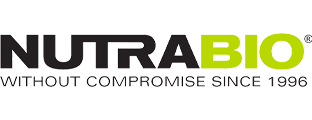








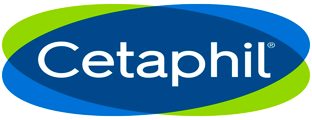
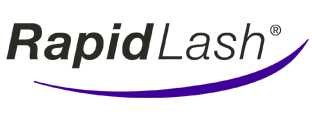














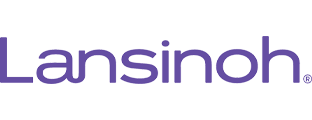


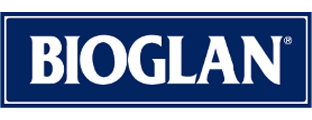



















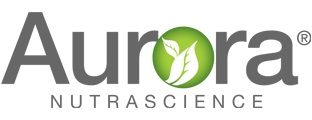



 By Dr. Eric Madrid, M.D.
By Dr. Eric Madrid, M.D.